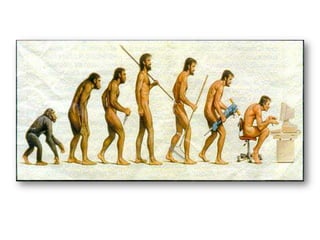
History of Computer Technology
- 2. the gradual transformation or development of certain specie to a new form.
- 5. One of the early precursors of the computer. It is an instrument containing beads used for arithmetic calculations
- 6. Invented by John Napier, it can perform multiplications and divisions. It contains a set of 11 sticks (bones), and are used by placing them side by side.
- 7. Wilhelm Schikard, a German scientist, invented a machine in 1623 that used sprocketed wheels to add, multiply and divide.
- 8. Developed by William Oughtred, it consists of two movable rulers placed side by side. Sliding the rulers can do multiplication and division.
- 9. Blaise Pascal, a French Mathematician invented a calculating machine that can add and subtract and comes with eight rotating gears, with each wheel representing places in the decimal system.
- 10. Developed by Joseph Marie Jacquard, a French inventor. This machine uses punch cards to program designs on fabrics and carpets, making them easier to be woven.
- 11. Charles Babbage, an English mathematician, built a working model of an early computer-like mechanical device that called the Difference Engine that can solve mechanical problems using the capacity of 20 decimals.
- 12. Herman Hollerith, an American inventor, designed a coding scheme and a mechanical tabulating machine which used punch cards that can be electronically read to process high volumes of data.
- 13. Developed by Howard Aiken, MARK I was the first electro- mechanical digital computing machine
- 15. The first computers used vacuum tubes for circuitry and magnetic drums for memory, and were often enormous, taking up entire rooms. They were very expensive to operate and in addition to using a great deal of electricity, generated a lot of heat, which was often the cause of malfunctions.
- 17. Transistors replaced vacuum tubes and ushered in the second generation of computers. The transistor was invented in 1947 but did not see widespread use in computers until the late 1950s. The transistor was far superior to the vacuum tube, allowing computers to become smaller, faster, cheaper, more energy- efficient and more reliable than their first-generation predecessors. Though the transistor still generated a great deal of heat that subjected the computer to damage, it was a vast improvement over the vacuum tube. Second-generation computers still relied on punched cards for input and printouts for output.
- 19. The development of the integrated circuit was the hallmark of the third generation of computers. Transistors were miniaturized and placed on silicon chips, called semiconductors, which drastically increased the speed and efficiency of computers. Instead of punched cards and printouts, users interacted with third generation computers through keyboards and monitors and interfaced with an operating system, which allowed the device to run many different applications at one time with a central program that monitored the memory. Computers for the first time became accessible to a mass audience because they were smaller and cheaper than their predecessors.
- 21. The microprocessor brought the fourth generation of computers, as thousands of integrated circuits were built onto a single silicon chip. What in the first generation filled an entire room could now fit in the palm of the hand. The Intel 4004 chip, developed in 1971, located all the components of the computer—from the central processing unit and memory to input/output controls— on a single chip.
- 23. Fifth generation computing devices, based on artificial intelligence, are still in development, though there are some applications, such as voice recognition, that are being used today. The use of parallel processing and superconductors is helping to make artificial intelligence a reality. Quantum computation and molecular and nanotechnology will radically change the face of computers in years to come. The goal of fifth-generation computing is to develop devices that respond to natural language input and are capable of learning and self-organization.
- 25. Danny D. J. Magdaraog
